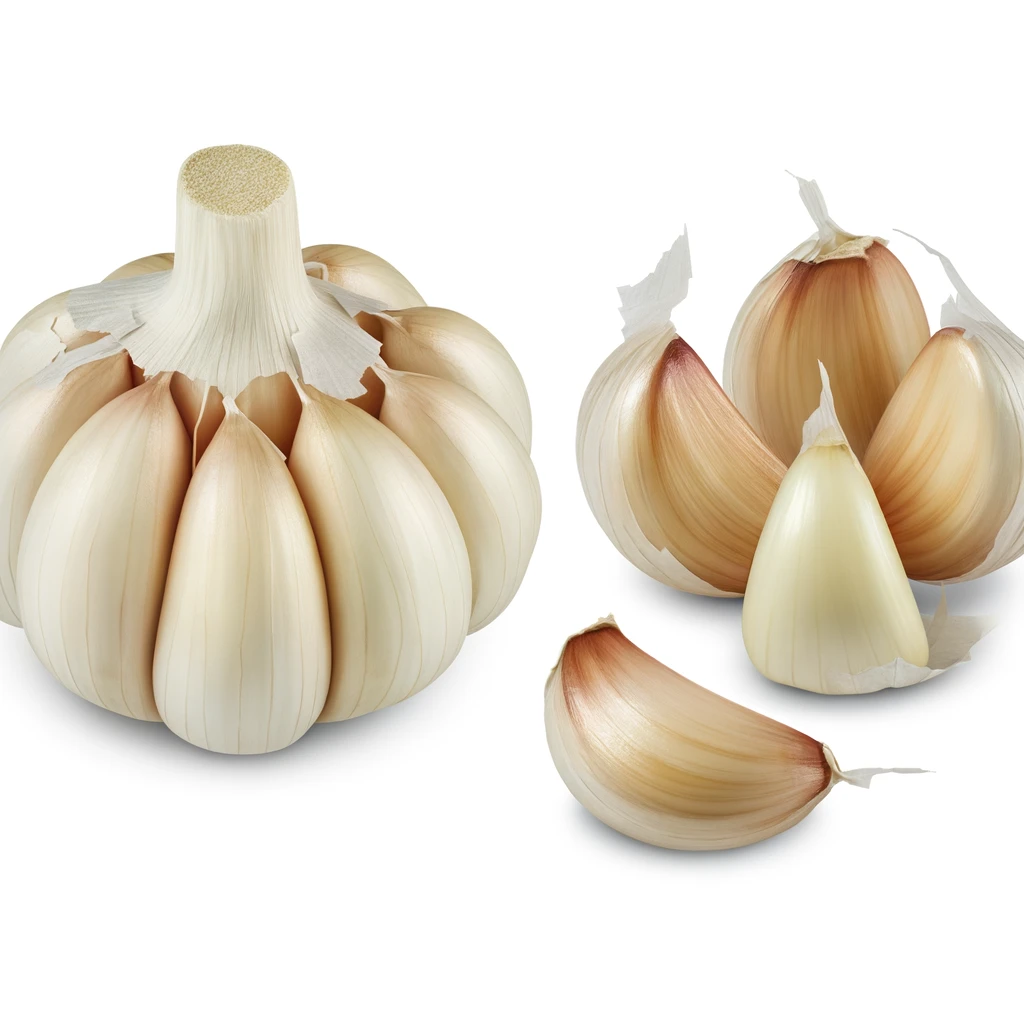Garlic, a staple in kitchens worldwide, is much more than just a flavor enhancer. This humble bulb is packed with nutrients and bioactive compounds that have been revered for their medicinal properties for centuries. Let’s delve into the nutritional content of garlic, explore its health benefits, and understand why incorporating garlic into your diet can contribute to excellent health.
Nutritional Content
Garlic is a nutrient-dense vegetable, here is the nutritional breakdown of a 100-gram serving of raw garlic:
- Vitamins:
- Vitamin C: Boosts the immune system and acts as a powerful antioxidant.
- Vitamin B6: Supports brain health and helps in the formation of neurotransmitters.
- Vitamin B1 (Thiamine): Essential for energy metabolism and nerve function.
- Minerals:
- Manganese: Important for bone health and metabolism.
- Selenium: A potent antioxidant that protects cells from damage.
- Calcium: Vital for bone and teeth health.
- Phosphorus: Crucial for energy production and bone health.
- Iron: Necessary for the production of hemoglobin in red blood cells.
- Phytonutrients:
- Allicin: The most significant bioactive compound in garlic, known for its antimicrobial, anti-inflammatory, and antioxidant properties.
- Flavonoids: Including quercetin, which has anti-inflammatory and antioxidant effects.
- Macronutrients:
- Calories: 149
- Carbohydrates: 33 grams
- Protein: 6.4 grams
- Fat: 0.5 grams
- Fiber: 2.1 grams
Health Benefits
- Boosts Immune Function: Garlic is well-known for its ability to enhance the immune system. The presence of allicin and other sulfur compounds helps the body combat infections and diseases. Regular consumption of garlic can reduce the severity and duration of common illnesses like the cold and flu.
- Supports Cardiovascular Health: Garlic has been extensively studied for its heart health benefits. It helps lower blood pressure, reduce total and LDL cholesterol levels, and improve overall heart function. These effects are largely attributed to the sulfur compounds in garlic, which help relax blood vessels and reduce inflammation.
- Anti-Inflammatory Properties: The bioactive compounds in garlic, such as allicin and flavonoids, exhibit significant anti-inflammatory properties. These compounds help reduce the risk of chronic inflammatory diseases like arthritis, and may even improve symptoms in those already suffering from these conditions.
- Antioxidant Effects: Garlic’s antioxidants, including selenium and vitamin C, protect cells from oxidative damage caused by free radicals. This reduces the risk of chronic diseases like cancer and heart disease, and supports overall cellular health.
- Antimicrobial and Antifungal: Allicin and other compounds in garlic have been shown to have potent antimicrobial and antifungal effects. Garlic can help fight off harmful bacteria, fungi, and viruses, making it an effective natural remedy for infections.
- Supports Digestive Health: Garlic’s prebiotic properties promote the growth of beneficial gut bacteria, which are essential for a healthy digestive system. This can improve digestion, reduce inflammation in the gut, and enhance nutrient absorption.
- May Improve Bone Health: Garlic contains essential minerals like calcium and phosphorus that support bone health. Some studies suggest that garlic supplementation can increase estrogen levels in women, potentially reducing the risk of osteoporosis.
- Potential Cancer Prevention: The sulfur compounds in garlic have been shown to inhibit the growth of cancer cells in test-tube studies. Regular consumption of garlic may reduce the risk of certain cancers, particularly those of the digestive tract.
Culinary Tips and Considerations
Tips to maximize the health benefits of garlic:
- Raw Consumption: Eating raw garlic ensures you get the highest concentration of allicin. Try adding minced raw garlic to salads, dips, or dressings.
- Cooking: While cooking garlic can reduce its allicin content, it still retains many beneficial compounds. Sauté, roast, or add garlic to soups and stews to enhance flavor and nutrition.
- Crushing or Chopping: Allow crushed or chopped garlic to sit for 10 minutes before cooking to maximize the formation of allicin.
- Garlic Supplements: If you find the taste of raw garlic too strong, garlic supplements can be an effective alternative. Look for high-quality products with standardized allicin content.
Conclusion
Garlic is a powerhouse of nutrition and health benefits, making it a valuable addition to any diet. From boosting immune function and supporting heart health to reducing inflammation and fighting infections, the positive effects of garlic are well-supported by scientific evidence.





